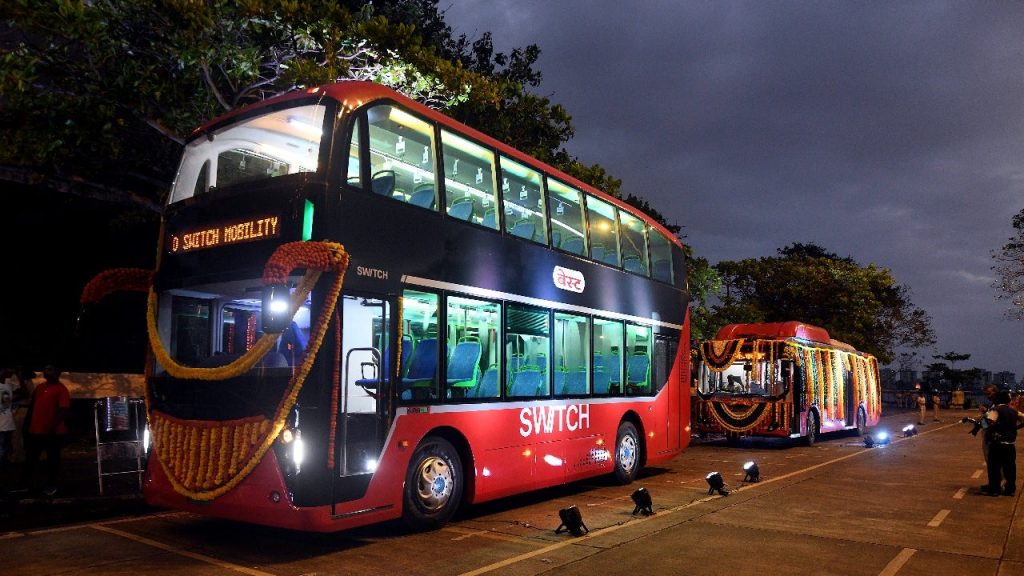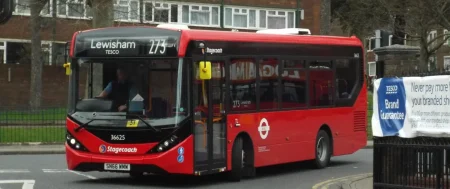In a significant green move, the Indian government has unveiled a plan to replace 800,000 diesel buses with electric buses over the next seven years. This ambitious initiative aims to reshape India’s public transportation system while addressing environmental concerns and accelerating the growth of the electric vehicle (EV) industry. In this article, we will explore the reasons behind this switch from diesel to electric buses and the potential impact it will have on India’s transportation landscape.

Diesel Buses and Electric Buses
Table of Contents
The Need for Transition to Electric Buses
Environmental Benefits
One of the primary motivations behind the transition from diesel to electric buses is the urgent need to reduce air pollution and combat climate change. Diesel buses are a major source of greenhouse gas emissions, contributing to poor air quality and health issues in urban areas. By replacing them with electric buses, India aims to significantly reduce carbon emissions and improve air quality for its citizens.
Government Incentives
The government’s push for electric buses is also driven by its commitment to clean energy and sustainable transportation. The Faster Adoption and Manufacturing Electric Vehicles (FAME) incentive program, launched in 2015, has been instrumental in promoting the adoption of EVs in India. By providing financial support and incentives, the government aims to encourage the transition to electric buses and create an ecosystem for EVs in the country.
Technological Advancements
Advancements in battery technology and charging infrastructure have made electric buses a viable alternative to diesel buses. With improvements in battery capacity and charging speed, electric buses can now offer comparable performance and range to their diesel counterparts. This has boosted confidence in the feasibility and effectiveness of electric buses for public transportation.
Economic Viability
While the initial investment in electric buses may be higher than in diesel buses, the long-term operational and maintenance costs of electric buses are significantly lower. Electric buses have fewer moving parts, resulting in reduced maintenance requirements and lower fuel costs. Over time, the cost savings from operating electric buses can offset the higher upfront investment, making them economically viable in the long run.
The Government’s Plan
Rollout Strategy
The government’s plan includes a phased rollout of electric buses across different sectors. The strategy is to deploy 200,000 electric buses for state transport undertakings (STUs), 550,000 for private operators, and 50,000 for schools and employee transportation by 2030. This comprehensive approach aims to cover a wide range of transportation needs and maximize the impact of electric buses in reducing emissions.
Funding and Incentives
To facilitate the transition, the government is exploring various funding options and incentives. Estimates suggest a capital investment of Rs 1.2–1.5 trillion may be required to roll out 100,000 electric buses at current prices. The government is in talks with stakeholders to finalize the scheme’s details, including potential financial support and incentives for electric bus manufacturers and operators.
Charging Infrastructure
A critical aspect of the plan is the development of a robust charging infrastructure to support the widespread adoption of electric buses. The government is working on creating a network of charging stations across the country, ensuring that buses have access to reliable and convenient charging facilities. This infrastructure development will be crucial in addressing range anxiety and promoting the widespread use of electric buses.
Large Procurement Tenders
To drive down costs and streamline distribution, the government is considering large procurement tenders to aggregate and convert demand for electric buses. By placing bulk orders, the per-unit cost of electric buses can be significantly reduced, making them more affordable for operators and transport companies. This approach also helps in standardizing the procurement process and ensuring the quality of electric buses.
Impact and Benefits
Environmental Impact
The switch from diesel to electric buses will have a profound positive impact on the environment. Electric buses produce zero tailpipe emissions, reducing air pollution and improving air quality in cities. By eliminating greenhouse gas emissions from the transportation sector, India can make significant progress in achieving its climate goals and contributing to global efforts to combat climate change.
Health Benefits
Diesel buses emit harmful pollutants, including particulate matter and nitrogen oxides, which have adverse health effects. Transitioning to electric buses will result in cleaner and healthier air for passengers and pedestrians. This improvement in air quality can lead to a reduction in respiratory diseases and other health issues associated with air pollution.
Energy Security
Reducing dependence on fossil fuels for transportation is crucial for India’s energy security. By transitioning to electric buses, India can reduce its reliance on imported oil and promote the use of domestically produced electricity. This shift towards electrification aligns with India’s vision of achieving energy independence and promoting renewable energy sources.
Job Creation
The transition to electric buses is expected to generate employment opportunities, particularly in the manufacturing and charging infrastructure sectors. As the demand for electric buses increases, it will drive investments in manufacturing facilities, creating jobs in the production and assembly of electric buses. Additionally, the development of charging infrastructure will require skilled workers, further contributing to job creation.
Economic Growth
The adoption of electric buses can contribute to the overall economic growth of the country. The manufacturing and deployment of electric buses will stimulate the local economy, attracting investments and creating a favourable business environment. It will also support the growth of ancillary industries such as battery manufacturing, charging infrastructure development, and electric vehicle component manufacturing.
Challenges and the Way Forward
Cost Considerations
One of the primary challenges in adopting electric buses is the higher upfront cost compared to diesel buses. The government must address this cost disparity through financial support, incentives, and bulk procurement tenders. As the demand for electric buses increases, economies of scale and technological advancements are expected to bring down the cost of electric buses, making them more affordable in the long run.
Charging Infrastructure
The development of a robust and widespread charging infrastructure is crucial for the successful adoption of electric buses. The government needs to invest in charging stations across the country, ensuring that buses have access to charging facilities at regular intervals. This infrastructure development should be done in coordination with bus deployment plans to support the growth of electric buses.
Skilled Workforce
The transition to electric buses requires a skilled workforce capable of manufacturing, maintaining, and operating electric buses and charging infrastructure. The government needs to invest in training programs and skill development initiatives to ensure an adequate supply of skilled workers in the electric vehicle industry. This will help create job opportunities and support the growth of the electric bus ecosystem.
Public Awareness and Acceptance
Creating awareness and generating public acceptance of electric buses is essential for their successful adoption. The government should launch awareness campaigns highlighting the benefits of electric buses, and addressing common misconceptions and concerns. Public-private partnerships can play a crucial role in promoting electric buses and educating the public about their advantages.
Conclusion
The transition from diesel to electric buses in India marks a significant step towards sustainable and clean transportation. The government’s ambitious plan to replace 800,000 diesel buses with electric buses over the next seven years demonstrates a strong commitment to reducing emissions, improving air quality, and promoting the growth of the electric vehicle industry. With the right investments, incentives, and infrastructure development, India can lead the way in electric bus adoption and inspire other countries to follow suit. The switch to electric buses not only benefits the environment and public health but also contributes to economic growth and energy security. It is a transformative step towards a greener and more sustainable future for India’s transportation sector.
Follow for more: Bestgaddi.com

